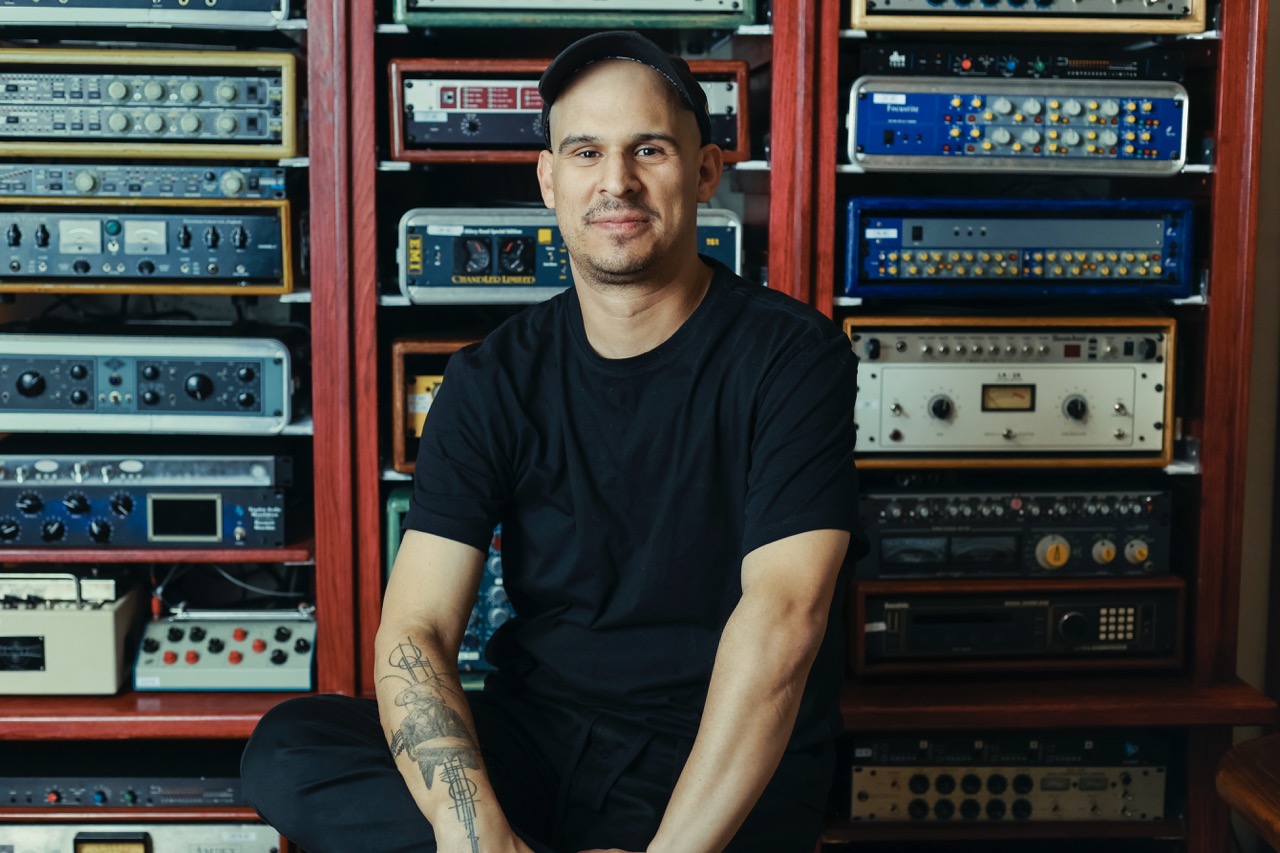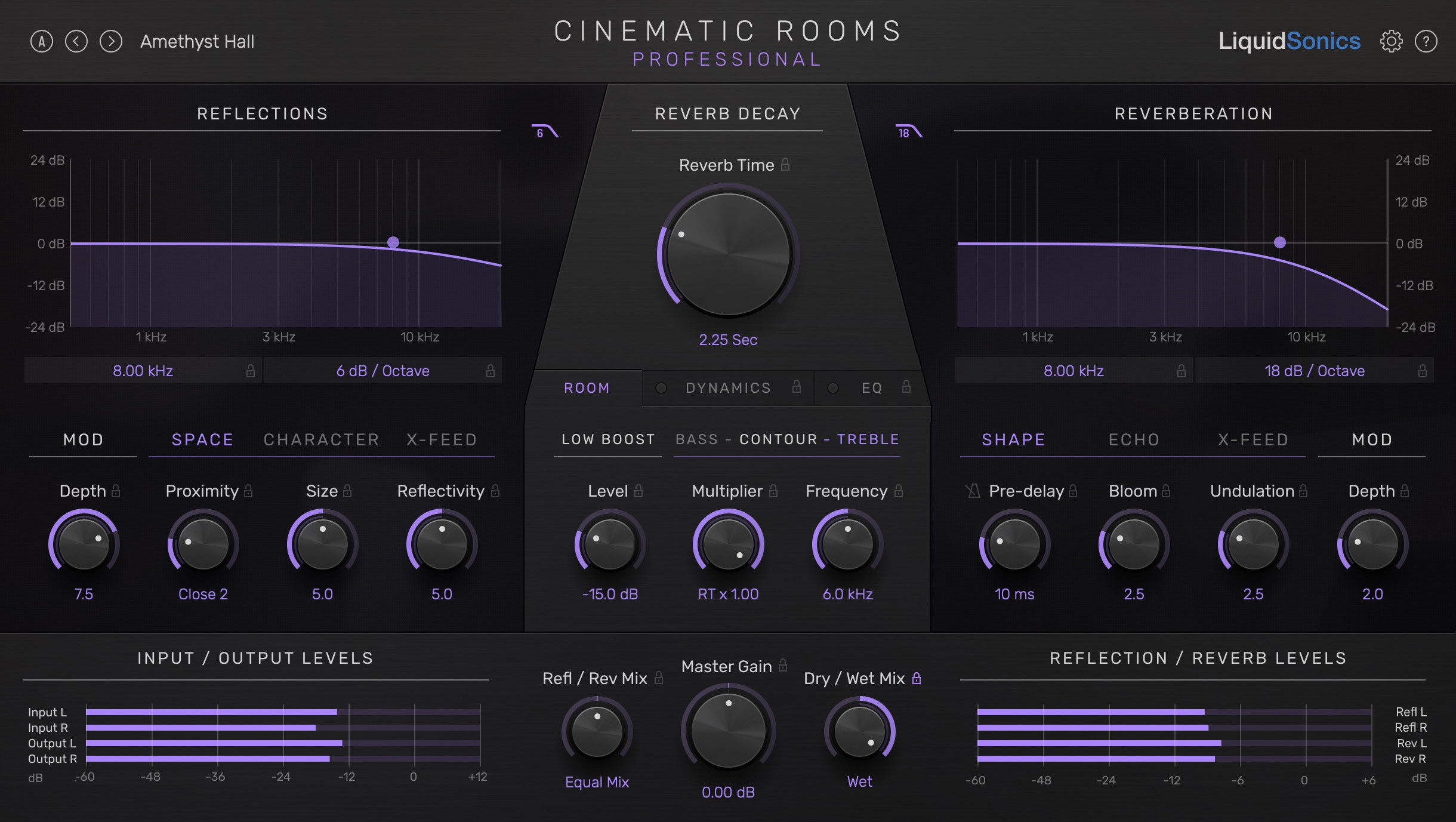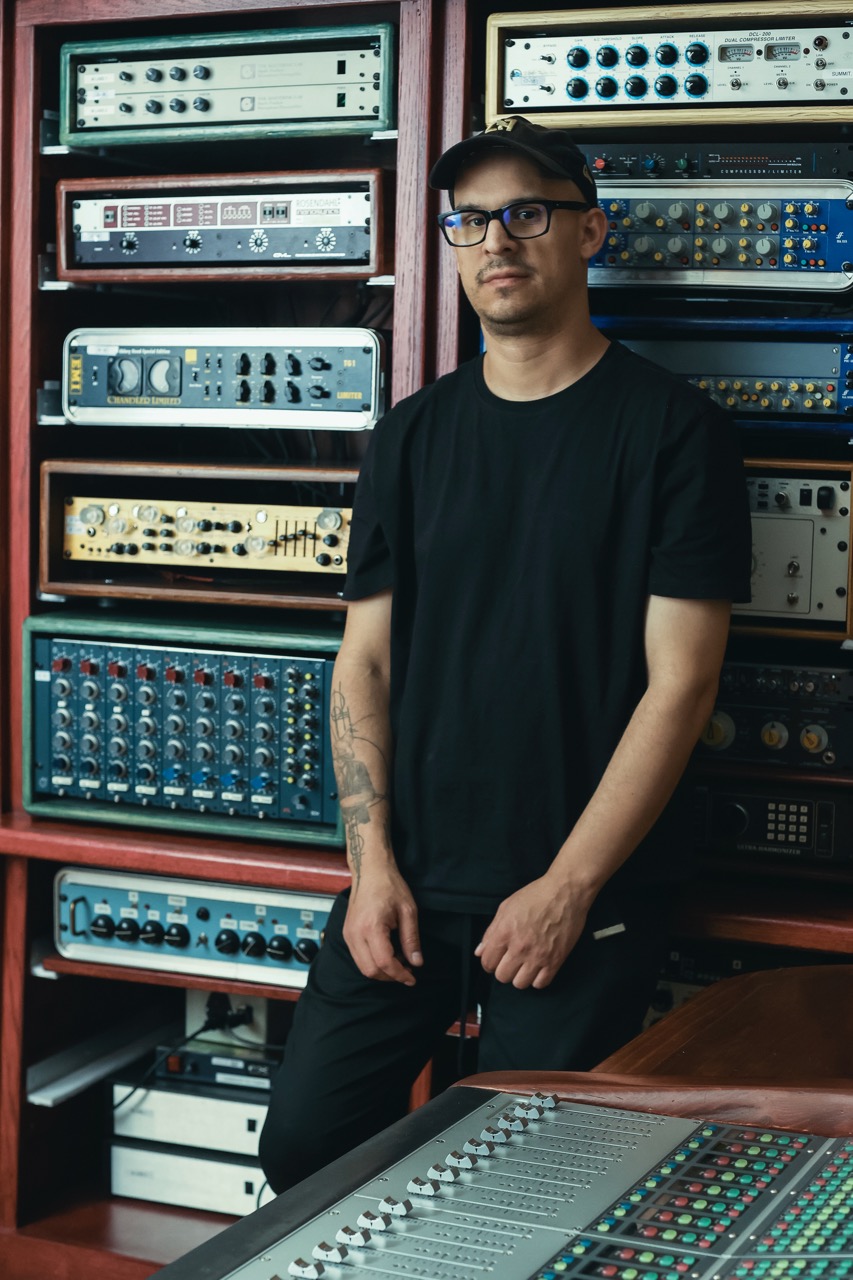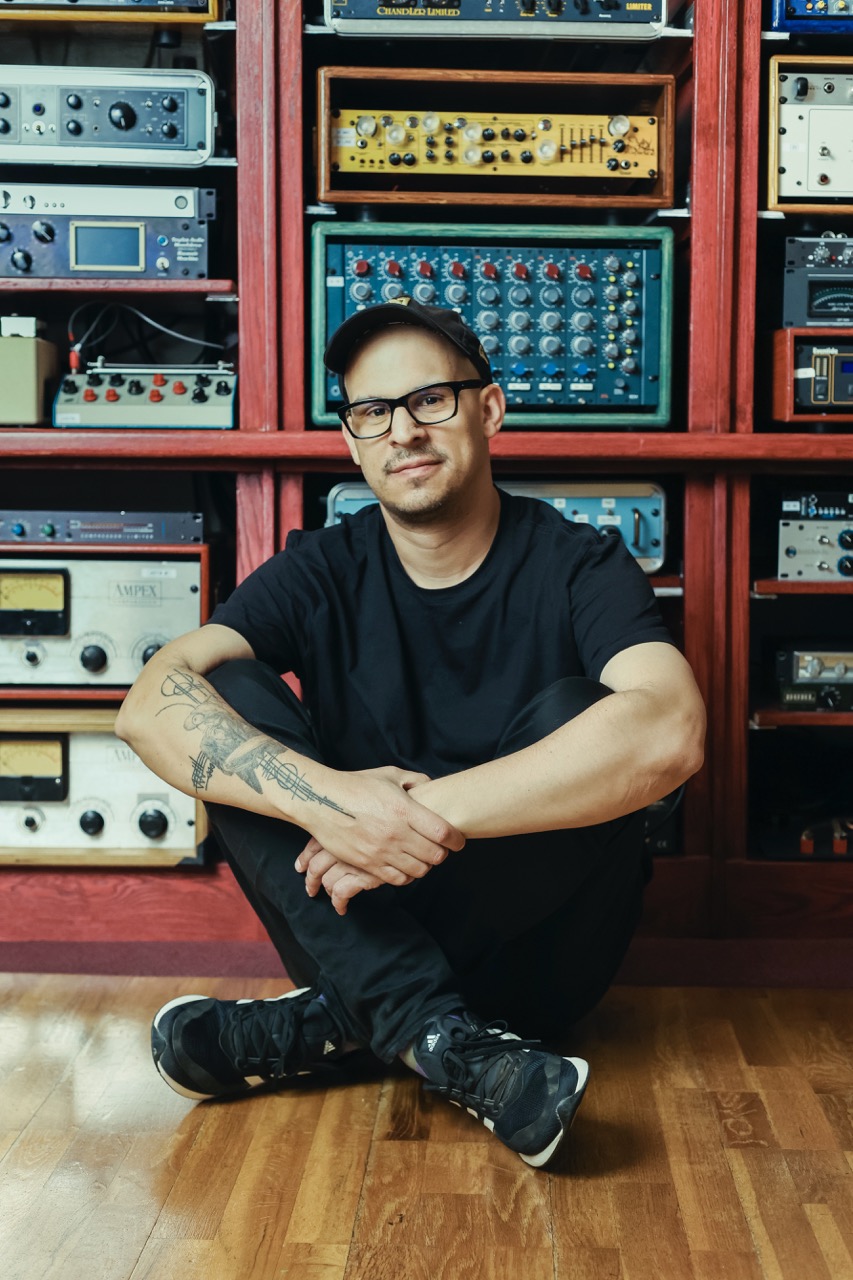
With four Grammy Awards and a filmography spanning from Guardians of the Galaxy to Watchmen, Justin Moshkevich is equally at home in high-profile music production and blockbuster movie score recording and mixing. Coming up under the wings of the award-winning engineer Gustavo Borner (Fito Páez, Ricky Martin, Los Tigres del Norte), Justin has developed a reputation as an A-list engineer and mixer in Hollywood and beyond.
In this interview, Justin reflects on his work recording and mixing the score for the latest Superman film, a project that called for both reverence and reinvention. With $125 million ticket sales at the box office on the opening weekend (the 3rd biggest in 2025), this highly anticipated reboot of the iconic comic book series is connecting with fans and moviegoers around the globe.
The score combines John Williams’ iconic theme with new music composed by John Murphy and David Fleming. Tag-teaming on recording and mixing, Justin and Gus had to develop a diligent workflow with a detailed mixing template to ensure a consistent overall sound while managing the project’s intense pressure. In the mix, they followed an approach that allowed those components to flow naturally, contrasting the elements of the arrangement with each iteration of the theme.
LiquidSonics’ Cinematic Rooms Professional reverb was used to craft the clean yet larger-than-life orchestral sound that a score like Superman’s demands.
In an industry flooded with processing options, Justin’s philosophy is refreshingly direct: focus on what serves the emotional connection between music and the story. For him, Cinematic Rooms Professional has become that essential tool, not because of its extensive feature set, but because it delivered the cinematic depth and clarity the score required while staying transparent to the source material.
Introduction
Q) What’s your background? How did you get started as a recording and mixing engineer?
I was born and raised in Lima, Peru. I practiced guitar diligently throughout my teens, then eventually got a scholarship to attend Berklee College of Music in Boston, with Film Scoring and Music Production & Engineering as my dual major. My original idea was to become either a film composer or a music producer full-time, but life took me more towards the engineering/mixing path, after landing my internship at Igloo Music in L.A.
Q) With four Grammys and movie score credits spanning from Watchmen to Guardians of the Galaxy and now Superman, you are firmly rooted in both music production and film scoring. What is it about going back and forth between these two fields that excites you?
For me, it’s very important to jump between film scores and records. They are like complementary pieces of a jigsaw puzzle. With scores, you need to be at the top of your game creatively, technically and logistically – but there’s no time to get too experimental, let things rest for a few days, or let the music service itself fully. With records, you can get excited about the minutia and the eventual impact the product will have on the listeners, regardless of its connection to a visual form. Sometimes I want to get things done fast, and sometimes I want to take my time and feel like my creative contributions are making a difference.
Recording and Mixing the Music of Superman
Q) Let’s talk about the guy with the red cape: how did you become involved with the Superman movie, and what was your initial reaction to taking on such an iconic franchise?
A) It’s all through my connection to John Murphy via Gustavo Borner. We’ve collaborated on numerous films in the past. I started filling in for Gustavo for the mixing that needed to be done at 4 am back in 2010 and progressively gained more responsibility one film at a time. Gus would mix in L.A., while I recorded in London, and then we would both mix simultaneously due to the crazy turnarounds on some of these.
Q) The music of Superman incorporates John Williams’ classic theme into the new score composed by John Murphy and David Fleming. How did you and Gus Borner approach mixing these elements to honour the past while creating something fresh?
A) I think the original themes served as a “cheat sheet” in the mix, in terms of narrative help. They are immediately recognized by the listener, and the new original music can’t simply “lead up” to them – they need to flow organically. In my case, it was a matter of contrasting the elements of the arrangement with each iteration of the theme, but not necessarily playing the John Williams themes with any more protagonism than the rest of the music.
Q) How did you and Gus divide responsibilities? What does that collaborative process look like on a project of this magnitude?
A) Most of the mixing and recording needed to happen at the same time. Gus started recording for a couple weeks and then I took over while he began mixing, and after recording was completed I jumped in to mix as well. We have a very diligent team that kept our mixing spreadsheet up to date, so we knew how much music we needed to target per day. We never “collaborate” on the same mix. We would start mixing different cues and try to finish mixing them separately. Sometimes we would work on each other’s cues on a playback session while addressing notes, but that’s the extent of it. The global sound is somewhat unified just by using the same mix template.
Q) How and where was the score recorded? Was it a traditional Decca Tree + outrigger setup or did you approach it as an Atmos-first recording with a more elaborate array?
A) It was recorded at the Warner Bros. Eastwood Scoring Stage, with overdubs at Igloo Music, and at the composers’ studios. It was a traditional Decca Tree/Outrigger/Surround setup, with minimal spot mics, an added pair of ribbons, and an Atmos “height” quad array.
Q) Where and when was it mixed?
A) We mixed it at Igloo Music in Burbank, CA, between April and June 2025.
Q) How did you balance using the natural reverb from the scoring stage with adding artificial reverb?
A) Warner is not a very reverberant room (compared to other scoring stages), so for some lush passages, reverb needs to be added. I generally try not to add any unless it’s really needed. For example, this could be when the perception of dryness compromises the perception of size relative to whatever else is happening in the music.
The LiquidSonics Workflow
Q) I’m sure you have all the tools you could ever hope for at your disposal on a project of this scale. What specific qualities of Cinematic Rooms Professional made it the right choice for the Superman score? Was there a moment when you knew it was delivering exactly what you needed?
A) I’ve been using Cinematic Rooms for years now. What attracts me to it is how “clean” it sounds when treated properly. Note the quotations. When you have material recorded at legendary scoring stages, you don’t want the reverb to mask the inherent sonic stamp of these rooms – so I look for a reverb that just elongates. I also like the interface and how the functions are prioritized in there.
Q) Can you describe a specific cue or scene where Cinematic Rooms Professional solved a mixing challenge or enabled a creative breakthrough?
A) I think it’s all over the score for all non-creatively modulated effects, so that includes the orchestra and the choir. Also, in the Dolby Atmos mix pass to fill in some of the side speaker information.
Q) How much use do you make of the surround editing planes in Cinematic Rooms Professional, and what does it enable you to do?
A) I don’t mess with it much. I rarely go outside the default Amethyst Hall, and only mess with the decay, reflection/reverb mix, output, lo/hi pass and bloom knobs. I know the advantages of being able to control the crossover frequencies and fine-tune decorrelation and fold-down, but I also believe this amount of control won’t make or break a mix.


Q) Are there any other standout features (sonically or regarding workflow) in Cinematic Rooms Professional that come to mind?
A) It’s just easy and versatile for me. I also use it a lot inserted onto a track to add dimension to things, and have even used it for pure reflections.
Q) Do you have go-to preset starting points in Cinematic Rooms Professional for orchestral elements, or does each cue demand completely custom reverb design?
A) It’s either the stock Amethyst Hall, with zero reflections, or the “Long and Stage” settings to put something in an akin space, when the material hasn’t been recorded in a large room. As mentioned before, I only mess up with decay time, some basic EQ, bloom, and the reflection/reverb mix.
Q) You’re also a regular user of Seventh Heaven Professional. How do these two LiquidSonics tools complement each other in your workflow? When do you reach for one versus the other?
A) I use Seventh Heaven mostly for their rooms. I think they sound really good. Here, I play more with pre-delay (and delay when opting for longer decays) on top of the basic functions. It’s also my go-to for certain shorter plates.
Q) How would you sum up the sound of Seventh Heaven?
A) Believable and effective.
Q) How does Seventh Heaven compare to / complement other reverbs in your arsenal?
A) It’s on the functional and flexible side of the arsenal. I’m not too precious about any plugin reverb – I use stuff that I know will work and will require minimal tweaking. With Seventh Heaven, I’m sure I’ll find something that works really quickly.

Q) What proportion of your work is Dolby Atmos? How do LiquidSonics plugins support your Atmos mixing workflow?
A) Almost every large project of this sort requires an Atmos mix now. I’d say two thirds of the immersive plugins in my Atmos template are LiquidSonics: Cinematic Rooms Professional, Seventh Heaven Professional, and Lustrous Plates Surround.
Q) The fold-down performance of a reverb is critical to adapt to different speaker setups in an immersive-first mixing industry as the playback track width is totally unpredictable now. How do you find LiquidSonics plugins behave in that respect?
A) So far, every fold-down seems to behave well without any tweaking for me. Maybe if some day I get to mix an album with just a handful of instruments and where it’s worth it to manage the spaces with more minutia, I’ll reach for those knobs 🙂
Outlook
Q) Do you feel there are any important areas where reverbs (hardware and software) still have a way to go in terms of workflow or acoustic requirements?
A) Not really. I believe the current market practices try to make us believe we need more features and flexibility in plugins than we actually do. It’s easier to sell features because we can’t sell good taste!
Q) What advice would you give someone who wants to follow a similar path into high-level film score engineering?
A) Make your network a priority. I have only secured one job in my career due to a film in my credentials. That’s one gig in over 15 years where a director/producer/studio went “I want this guy because he worked on XYZ”.
Secondly, don’t get lost in the universe of options. Size, depth, foreground, middleground and background matter. All in function of emotional connection. The rest is negligible in importance and will come with experience.
Remember that the vast majority of the elite musical canon was made with 1/100 of the tools available today.
Q) What upcoming projects are you looking forward to?
A) All of them!
Many thanks to Justin Moshkevich for sharing his insights into this very special project.
Listen to the Superman score:
Tidal | Apple Music | Spotify
Justin’s web and social links:
IMDb | IG |Discogs
Photography credits:
David Vega

